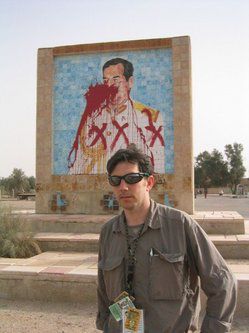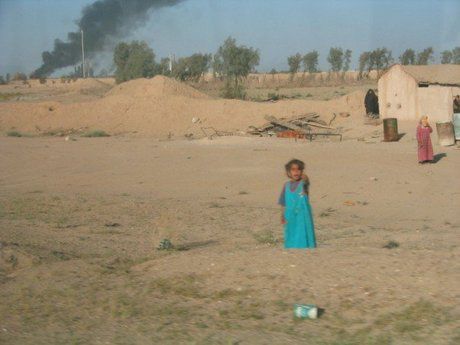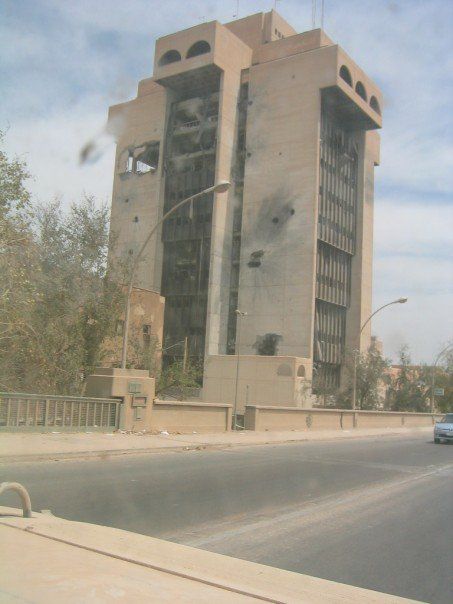The “shock and awe” bombing that kicked off the Iraq War began seven years ago.
More than 4,300 U.S. troops have died during the war. At least 100,000 Iraqi civilians have been killed, according to an Associated Press tally. The U.S. has spent nearly $1 trillion.
The war’s start is a mile marker in my life. I’ll always remember where I was when the Iraq War began: inside the razor wire at an American military base in northern Kuwait.
Bob Ingrassia in Safwan, Iraq, March 2003
I was a reporter for the New York Daily News, tagging along with the 4th Infantry Division as an embedded journalist.
It’s strange to consider how my feelings about that period have changed. At the time, I was disappointed that the invasion had begun without me.
Here I was killing time in an air-conditioned tent in the desert with the unlucky 4th Infantry Division while other reporters were filing exciting tales from the front. I felt like I was stuck in traffic outside the big game.
It was supposed to have been different. The 4th Infantry Division had initially planned to lead the northern prong of a dual invasion, charging from Turkey toward Baghdad. That plan fell apart when Turkey balked at letting the United States marshal its troops on Turkish soil.
So “my division” got re-routed through the Persian Gulf to Kuwait. The delay meant the 4th Infantry Division missed out on most of the initial ground fighting.
By the time the 4th ID rolled into Iraq, U.S. troops already had taken Saddam International Airport. Vehicles in my unit convoyed from Kuwait to Baghdad with their headlights on, not even trying to be sneaky.
A child looks on as a U.S. military convoy passes through southern Iraq in March 2003. (Photo by Bob Ingrassia)
Along the road, there were a lot of waves from Iraqis. Kids tried to sell soldiers worthless Iraqi bills. Even then, though, you’d see groups of young men who stared coldly at the passing invaders. Many of them inevitably became the “insurgents” who made the U.S. effort such a mess for so long.
My unit camped out at the Baghdad airport. Soldiers who arrived earlier had already looted the airport bars and gift shops.
Oddly enough, it was probably safer for journalists in Baghdad in the first week after the fall than it was in the following years. I rode in an unarmored Humvee from the airport into the heart of Baghdad, taking snapshots along the way. A lot of Iraqis smiled at the Americans. But seeing men gathered on side streets behind barricades of debris hinted that all was not right.
In a week, the Daily News called me home. My editors had decided that having me watch U.S. troops “mop up” wasn’t going to be a great story. Little did we know that the real fight lay ahead.
Looking back, of course, I’m grateful I didn’t get hurt in the war zone. My disappointment at “missing the war” has given way to disbelief that the war is still going on and that so many civilians and soldiers have been killed.
Baghdad was a mess after the U.S. invasion. (Photo by Bob Ingrassia)



